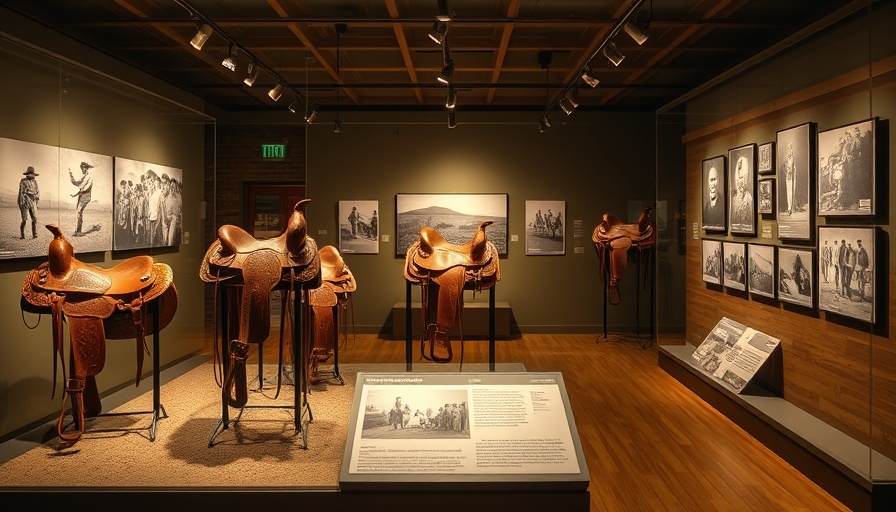
Exploring Cultural Connections: The Mexican Roots of Hawaiian Cowboy Legacy
The Briscoe Western Art Museum in San Antonio has recently unveiled an intriguing exhibit that draws a significant cultural connection between Mexican traditions and the cowboy heritage found in Hawaii. This exploration highlights not only the historical ties but also the shared stories that bridge these two distinct regions—a point of fascination for historians and culture enthusiasts alike.
Cattle Ranching: A Shared History
At the heart of the exhibit lies the historical practice of cattle ranching, which can be traced back to the Spanish missions in the Americas. The presence of cattle in Mexico influenced the development of livestock herding techniques that later made their way to the Hawaiian Islands. As Mexican ranchers, or 'vaqueros,' honed their skills, they laid the groundwork for what would evolve into the Hawaiian cowboy culture, known as the 'paniolo.'
Symbolism in Cowboy Gear and Traditions
The exhibit presents fascinating artifacts, including traditional attire and tools used by these early cowboys. Visitors can marvel at the distinctive woven hats and leather gear that tell tales of sun-drenched cattle drives across both landscapes. The blending of these elements not only signifies practical needs but also expresses a rich story of adaptation and survival as diverse cultures interacted.
Modern Relevance: Why This History Matters
As Hawaiian culture gains wider recognition, the influence of Mexican traditions on its development becomes increasingly significant. Understanding this connection offers deeper insights into contemporary Hawaiian identity and cultural pride. The exhibit encourages visitors to reflect on the importance of cultural exchange in shaping regional histories, a timely topic given today's discussions on globalization and multiculturalism.
Community Engagement and Education
The Briscoe Museum aims to engage with local schools and communities through educational programs tied to this exhibit. In an age where discussions about heritage are paramount, these programs will bolster awareness and appreciation for the intertwined histories of different communities. Organizers hope that visitors will leave with a newfound curiosity about how diverse cultures can coexist and enrich one another.
Looking Toward the Future
As the exhibit continues to draw interest, discussions surrounding the preservation of stories and traditions across cultures will likely gain momentum. With many families in both Mexico and Hawaii tracing their roots to these shared histories, this exhibit serves as a reminder of the importance of maintaining these narratives for future generations. It sparks a dialogue on how we can continue to celebrate our unique cultural heritages while recognizing the profound influences that shape our identities.
Conclusion: Embrace the Journey through Culture
As you journey through the Briscoe Western Art Museum’s exhibit, take time to reflect on how intertwined our global narratives truly are. Every artifact not only connects us to the past but calls us to understand the rich tapestry of relationships that bind cultures together. Engage with these histories and consider how they resonate with your own identity. This understanding shapes not just personal narratives but also strengthens community bonds.
 Add Row
Add Row  Add
Add 




Write A Comment